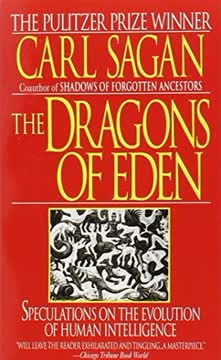Key Takeaways
1. The Cosmos: Our Vast and Ancient Home
We are made of stellar ash. Our origin and evolution have been tied to distant cosmic events.
Our cosmic heritage. The universe is approximately 13.8 billion years old, and Earth formed about 4.5 billion years ago. All the elements that make up our world and our bodies were forged in the hearts of stars. The carbon in our cells, the oxygen we breathe, and the iron in our blood were all created through stellar nucleosynthesis and dispersed through space by supernovae explosions.
Scale of the universe. Our Milky Way galaxy contains an estimated 100-400 billion stars, and there are roughly 100 billion galaxies in the observable universe. This vast cosmic ocean puts our existence into perspective, highlighting both our insignificance in size and our significance as conscious observers of the cosmos.
2. The Evolution of Scientific Understanding
The Cosmos is all that is or ever was or ever will be. Our feeblest contemplations of the Cosmos stir us—there is a tingling in the spine, a catch in the voice, a faint sensation, as if a distant memory, of falling from a height.
Ancient insights. The journey of scientific understanding began with ancient civilizations observing celestial patterns and developing calendars. Greek philosophers like Aristarchus proposed a heliocentric model of the solar system, challenging geocentric beliefs.
Scientific revolution. The work of Copernicus, Kepler, Galileo, and Newton revolutionized our understanding of the cosmos. They established the foundations of modern astronomy and physics, revealing the true nature of planetary motions and the laws governing the universe.
Modern cosmology. The 20th century brought profound discoveries:
- Edwin Hubble's observation of galactic redshifts, leading to the concept of an expanding universe
- The cosmic microwave background radiation, supporting the Big Bang theory
- The discovery of exoplanets, opening new possibilities for life beyond Earth
3. The Planets: A Journey Through Our Solar System
We are like butterflies who flutter for a day and think it is forever.
Diversity of worlds. Our solar system is a showcase of planetary diversity:
- Mercury: A scorched, cratered world
- Venus: A hellish greenhouse with crushing atmospheric pressure
- Mars: A cold desert with hints of ancient water
- Jupiter: A giant with a centuries-old storm and dozens of moons
- Saturn: Adorned with magnificent rings and moons like Titan
- Uranus and Neptune: Ice giants with unique characteristics
Exploration milestones. Robotic missions have revolutionized our understanding of the solar system:
- Mariner and Viking missions to Mars
- Voyager's grand tour of the outer planets
- Cassini-Huygens' exploration of Saturn and its moons
- New Horizons' flyby of Pluto and the Kuiper Belt
These missions have revealed the complexity and potential habitability of worlds beyond Earth, expanding our cosmic perspective.
4. Stars: The Engines of Cosmic Evolution
The nitrogen in our DNA, the calcium in our teeth, the iron in our blood, the carbon in our apple pies were made in the interiors of collapsing stars. We are made of starstuff.
Stellar lifecycles. Stars are born from collapsing clouds of gas and dust, fusing hydrogen into helium in their cores. As they age, they progress through various stages:
- Main sequence: Stable hydrogen fusion
- Red giant: Core contraction and envelope expansion
- Supernova: Explosive death of massive stars
- White dwarf, neutron star, or black hole: Stellar remnants
Element creation. Stars are cosmic factories, creating heavier elements through nuclear fusion:
- Hydrogen and helium: Primordial elements from the Big Bang
- Carbon, nitrogen, oxygen: Created in medium-mass stars
- Iron and heavier elements: Forged in supernovae
This process of stellar nucleosynthesis is responsible for the chemical diversity of the universe and the elements necessary for life.
5. The Search for Extraterrestrial Intelligence
The surface of the Earth is the shore of the cosmic ocean. On this shore, we've learned most of what we know. Recently, we've waded a little way out, maybe ankle-deep, and the water seems inviting.
Drake Equation. Frank Drake formulated an equation to estimate the number of communicative civilizations in our galaxy, considering factors such as:
- Rate of star formation
- Fraction of stars with planets
- Fraction of planets that could support life
- Probability of life evolving intelligence
- Lifetime of technological civilizations
SETI efforts. The Search for Extraterrestrial Intelligence (SETI) involves:
- Radio telescope searches for artificial signals
- Optical SETI looking for laser communications
- Analysis of exoplanet atmospheres for biosignatures
Fermi Paradox. The apparent contradiction between the high probability of extraterrestrial civilizations and the lack of evidence for their existence raises questions about the rarity of life, the challenges of interstellar communication, or the longevity of technological civilizations.
6. The Human Journey: From Atoms to Consciousness
We are a way for the cosmos to know itself.
Cosmic evolution. The journey from the Big Bang to human consciousness spans billions of years:
- Formation of atoms and molecules
- Birth of stars and galaxies
- Creation of heavy elements
- Formation of planets
- Origin of life
- Evolution of complex organisms
- Development of intelligence and technology
Brain and mind. The human brain, with its 86 billion neurons, is the most complex structure we know in the universe. It allows us to contemplate our own existence, understand the cosmos, and create art, science, and technology.
Cultural evolution. Human progress has been marked by:
- Development of language and writing
- Scientific and technological advancements
- Exploration of Earth and space
- Creation of global communication networks
This cultural evolution has accelerated our ability to understand and interact with the cosmos.
7. Our Cosmic Responsibility: Preserving Earth and Exploring Space
We have a choice: We can enhance life and come to know the universe that made us, or we can squander our 15 billion-year heritage in meaningless self-destruction.
Environmental stewardship. As the only known harbors of life, Earth and its biosphere require our protection:
- Addressing climate change
- Preserving biodiversity
- Managing resources sustainably
- Reducing pollution and waste
Space exploration. Continuing our journey into space is crucial for:
- Scientific discovery
- Technological advancement
- Ensuring long-term human survival
- Gaining cosmic perspective
Ethical considerations. As we venture into space, we must consider:
- The potential impact on extraterrestrial environments
- The equitable distribution of space resources
- The preservation of scientific and cultural heritage
- The development of international space law and cooperation
Our actions today will shape the future of humanity and our role in the cosmos. We have the responsibility to act as wise stewards of our planet and curious explorers of the universe.
Last updated:
FAQ
What's Cosmos by Carl Sagan about?
- Exploration of the Universe: Cosmos is a comprehensive exploration of the universe, blending science, philosophy, and history to provide a deep understanding of our place in the cosmos.
- Human Connection to Nature: The book emphasizes humanity's profound connection to the universe, suggesting that our existence is intricately linked to the cosmos.
- Scientific Method and History: Sagan traces the development of scientific methods and knowledge through historical figures and events, illustrating the evolution of our understanding of the universe.
Why should I read Cosmos by Carl Sagan?
- Engaging and Accessible: Carl Sagan's writing is both poetic and insightful, making complex scientific concepts accessible to the lay reader.
- Inspiring Perspective: The book offers a transformative perspective on our existence, encouraging readers to ponder their role in the universe.
- Cultural and Historical Context: Sagan weaves in cultural and historical narratives, enriching the scientific discourse with stories of ancient civilizations.
What are the key takeaways of Cosmos by Carl Sagan?
- Interconnectedness of Life: All life is interconnected, and we are part of a larger cosmic narrative, emphasizing our shared heritage with the universe.
- Importance of Scientific Inquiry: The book stresses the importance of scientific inquiry and skepticism in understanding the universe.
- Human Responsibility: Sagan underscores the responsibility humanity has to protect the Earth and seek peaceful coexistence.
What are the best quotes from Cosmos by Carl Sagan and what do they mean?
- "The Cosmos is all that is or ever was or ever will be.": Highlights the vastness and timelessness of the universe, urging us to understand our place within it.
- "We are made of starstuff.": Emphasizes our connection to the universe, as the elements that compose our bodies were formed in the hearts of stars.
- "The Earth is a very small stage in a vast cosmic arena.": Reminds us of our planet's insignificance in the grand scheme of the universe, urging humility.
How does Cosmos by Carl Sagan address the possibility of extraterrestrial life?
- Life Beyond Earth: Sagan discusses the likelihood of extraterrestrial life, suggesting that the universe may be teeming with intelligent civilizations.
- Search for Intelligence: The book emphasizes the search for intelligent life and the methods we might use to detect it, such as studying radio signals.
- Philosophical Implications: Sagan explores how discovering extraterrestrial life would affect our understanding of humanity and our place in the universe.
What is the significance of the Cosmic Calendar in Cosmos by Carl Sagan?
- Visualizing Cosmic Time: The Cosmic Calendar compresses the history of the universe into a single year, helping readers grasp the vast timescales involved.
- Human History in Context: Human history occupies only the last few seconds of December 31, illustrating how recent our existence is in the cosmic timeline.
- Encouragement for Exploration: It serves as a call to action for humanity to explore and understand the universe, as our time is limited.
How does Cosmos by Carl Sagan explore the relationship between humanity and the universe?
- Cosmic Perspective: Sagan encourages readers to adopt a cosmic perspective, recognizing that humanity is just a small part of a vast universe.
- Responsibility to Earth: The book highlights the responsibility humanity has to protect the planet and seek peaceful coexistence.
- Interconnected Evolution: Sagan discusses how human evolution is intertwined with cosmic events, emphasizing our existence as a product of cosmic evolution.
What role does history play in Cosmos by Carl Sagan?
- Historical Context of Science: Sagan provides a historical context for scientific discoveries, tracing the evolution of ideas from ancient civilizations to modern science.
- Lessons from the Past: The book emphasizes the importance of learning from history, particularly in understanding the relationship between science and society.
- Cultural Narratives: Sagan weaves cultural narratives into the scientific discourse, illustrating how different societies have understood the cosmos throughout history.
How does Cosmos by Carl Sagan address the potential for self-destruction of civilizations?
- Historical Context: Sagan reflects on the history of civilizations and their tendency toward self-destruction, particularly with nuclear weapons.
- Human Nature: The book explores the duality of human nature, balancing aggression and compassion, and the need for societies to evolve.
- Call to Action: Sagan urges readers to take responsibility for the future of humanity, advocating for disarmament and cooperation.
What is the significance of the Library of Alexandria in Cosmos by Carl Sagan?
- Center of Knowledge: The Library was the intellectual heart of the ancient world, playing a crucial role in preserving and advancing knowledge.
- Loss of Knowledge: Sagan highlights the tragic loss of knowledge when the Library was destroyed, hindering scientific progress for centuries.
- Cultural Exchange: The Library was a melting pot of ideas from different cultures, fostering collaboration among scholars.
How does Cosmos by Carl Sagan explain the scientific method?
- Foundation of Inquiry: Sagan describes the scientific method as a systematic approach to inquiry that relies on observation, experimentation, and critical thinking.
- Skepticism and Imagination: The book highlights the balance between skepticism and imagination in scientific discovery, essential for progress.
- Importance of Evidence: Sagan stresses the importance of evidence in validating scientific claims, arguing that all hypotheses must be rigorously tested.
What are the implications of the Drake Equation discussed in Cosmos by Carl Sagan?
- Estimating Civilizations: The Drake Equation estimates the number of advanced civilizations in the Milky Way Galaxy, factoring in variables like stars and planets.
- Human Responsibility: Sagan suggests the equation highlights the importance of humanity's choices in determining our future.
- Hope for the Future: The equation implies that if civilizations can coexist with technology, there may be many others in the galaxy, offering hope for understanding our place in the universe.
Review Summary
Cosmos is widely praised as an accessible and inspiring introduction to science and astronomy. Readers appreciate Sagan's eloquent writing, engaging storytelling, and ability to convey complex concepts to a general audience. The book's vivid illustrations and photographs are frequently mentioned as highlights. Many reviewers note how the book sparked their interest in science and continues to be influential decades after publication. Some criticism is directed at occasional dated information and Sagan's writing style, but overall the book is highly recommended for its blend of science, philosophy, and wonder.
Similar Books



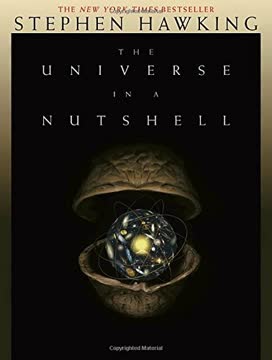



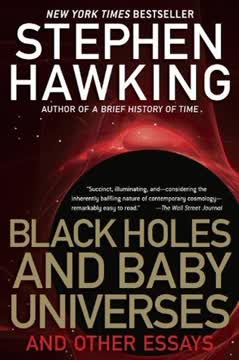
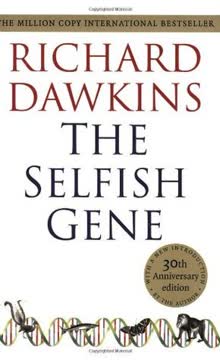
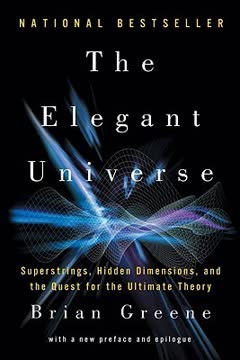
Download PDF
Download EPUB
.epub digital book format is ideal for reading ebooks on phones, tablets, and e-readers.



